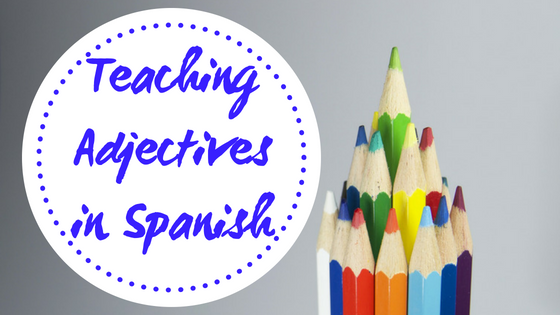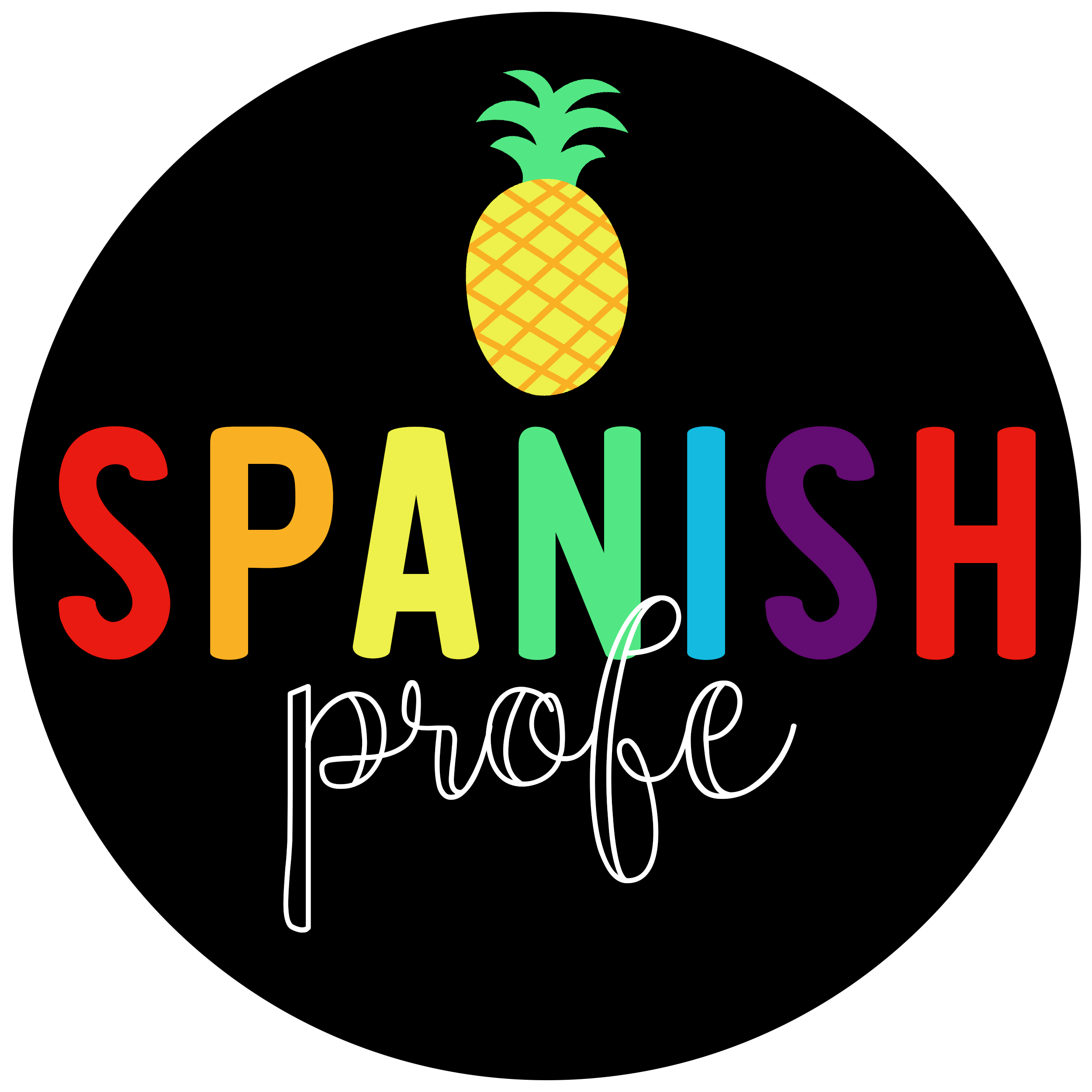¡Adjetivos! ¡Adjetivos! I love teaching adjectives in my Spanish immersion class. It is a hands-on subject and fun to see how students can use what they learn in their descriptive writing as soon as they understand the concept.
Below I will share a few of my favorite activities to teach adjectives in Spanish in primary elementary classrooms K-2. Many of these could be used in Spanish world language classrooms as well if you are looking for some new ways to teach adjectives to your kids in Spanish.
I usually have my immersion students draw a picture of themselves and then I have students think of 3-5 adjectives about themselves. This allows us to have a discussion (or lesson) about adjectives that describe people. When working on adjectives in class, I make sure to ask questions about people or animals in books that we read class.
Next, we usually work on some adjectives that describe animals. The kids usually have fun with this as they learn new words in Spanish that they didn’t know before. Often they will want to know how to stay stinky, slimy, or scaly. You might want to make an anchor chart out fo these words or a list that kids can keep in their Writer’s Workshop folders or notebooks. If Spanish is not your native language, and you are asked an adjective that you don’t know or remember; don’t freak out. Look it up together with student(s). It is great for students to learn that you don’t know everything and are learning new words too.
After we cover animal adjectives, we move on to describe things and places. Again, I usually choose a common theme that everyone is familiar with, like winter, spring, the cafeteria, music class, etc. You could also do various ‘manualidades’ as centros throughout the year. Below is a picture of the snowman we made and some of the adjectives in Spanish that we came up with as a class. My students generally do these in literacy centers or on a day that we need a little break. For the literacy center, I make an example but do NOT label it with adjectives as I want students to come up with their original ideas. I sometimes precut some of the craft shapes for gluing, so students have time to focus on adjectives instead of cutting and pasting a perfect circle.
After that we usually work on describing food– and if the kids are lucky we have a taste test to ensure our adjective game is on the mark. I try to pick a food that everyone is familiar with like popcorn, pizza, ice cream or a cookie. We usually do a taste test and talk about using all five senses to describe the food. Below you can see the anchor chart that we used to describe ‘palomitas de maiz’ in our first grade Spanish immersion class.
Students also work during centers or Daily 5 time on some worksheets or activities centered around adjectives. I have made an adjective activity pack for K-2 students and it can be found here. I use a variety of activities so that it doesn’t become repetitive or boring. We sometimes include some adjective, noun, verb sorts later in the year– depends on the group and their level.
Students love playing ‘Objeto misterioso’. You can put an object in a bag or box and have students stick their hand in and feel the object. Then a few could raise their hand and state an adjective about the object they touched. After thinking of several adjectives that describe the object, students could guess what the ‘objeto misterioso’ is. This activity could be done during the morning meeting or at the beginning (or end) of your literacy block.
This blog post was packed with ideas of how you can make your adjective unit in Spanish interesting and hands-on for your students. Do you have another way you love teaching adjectives to your students? Please share in the comments below.
Did you like this article? Sign up for updates, freebies and Spanish lesson ideas from SpanishProfe’s newsletter.
















